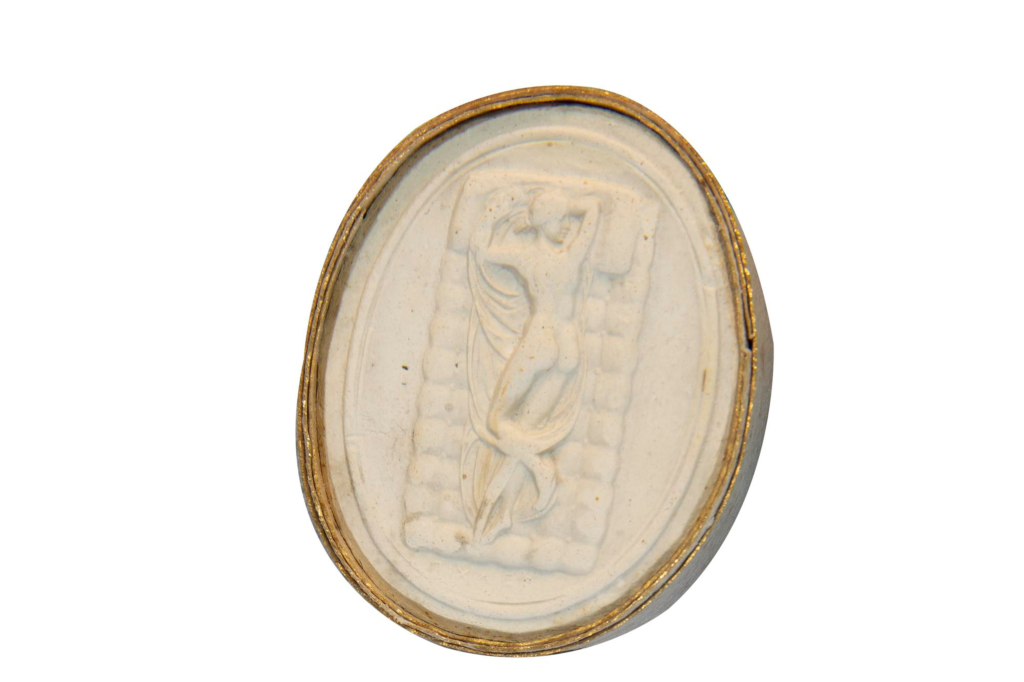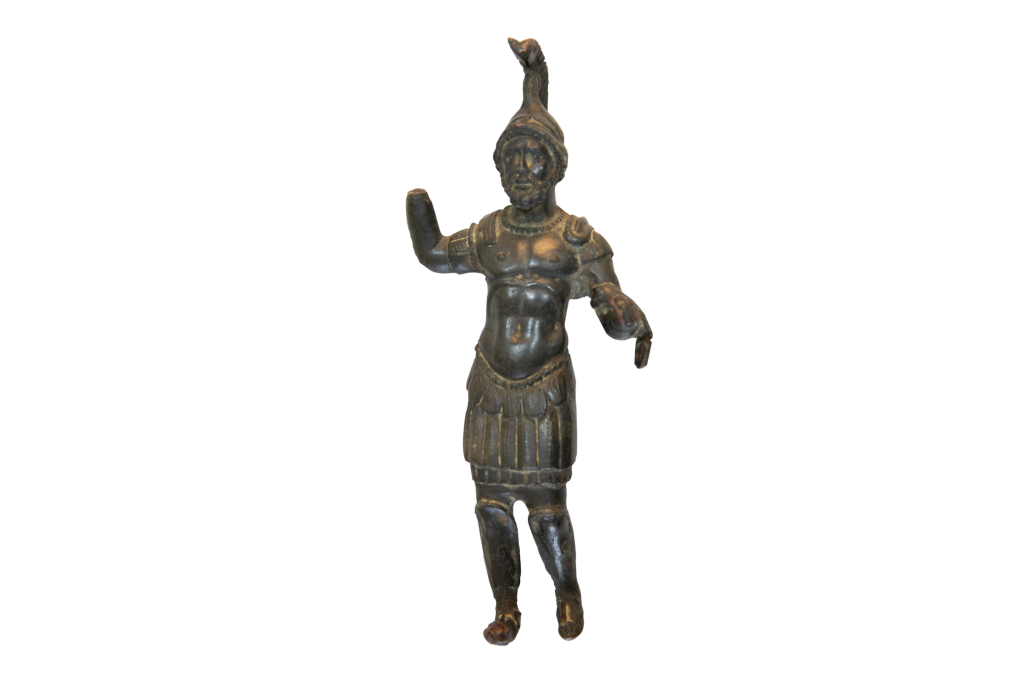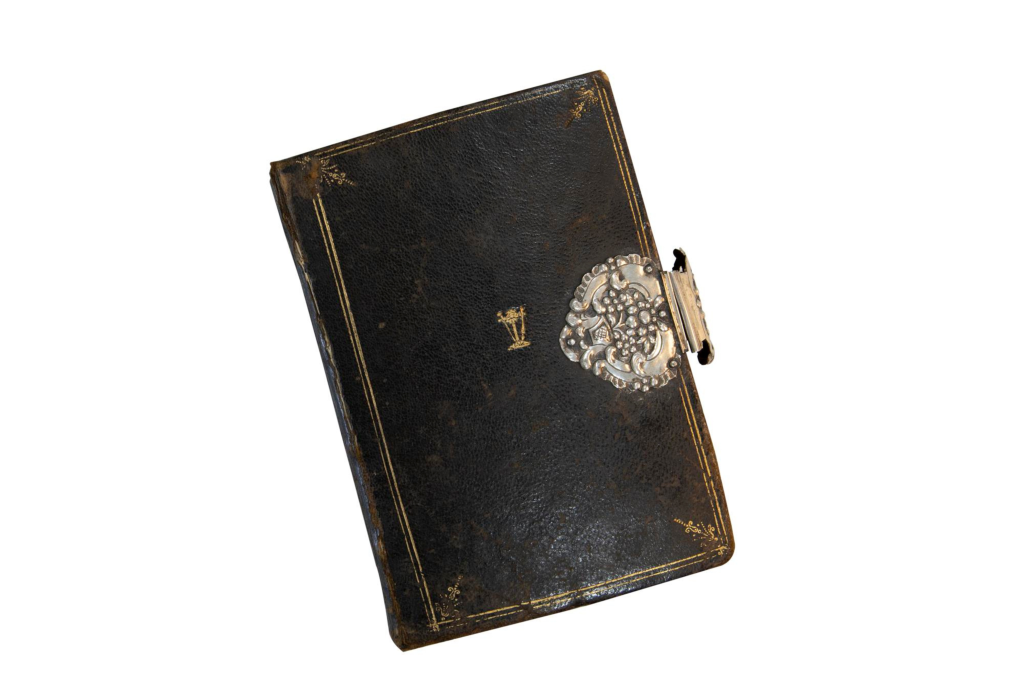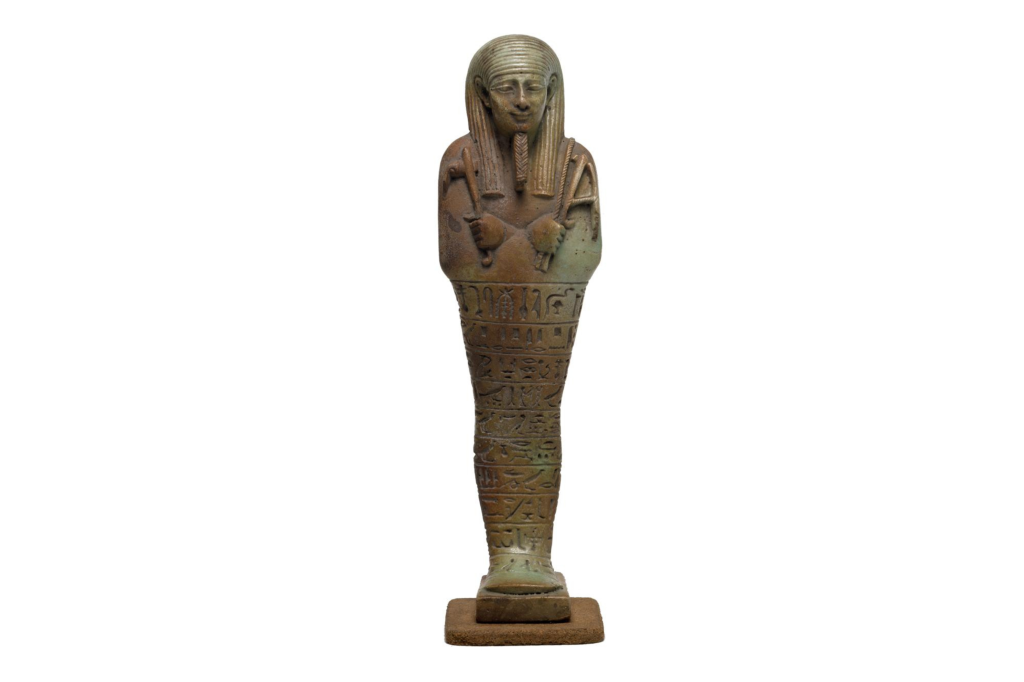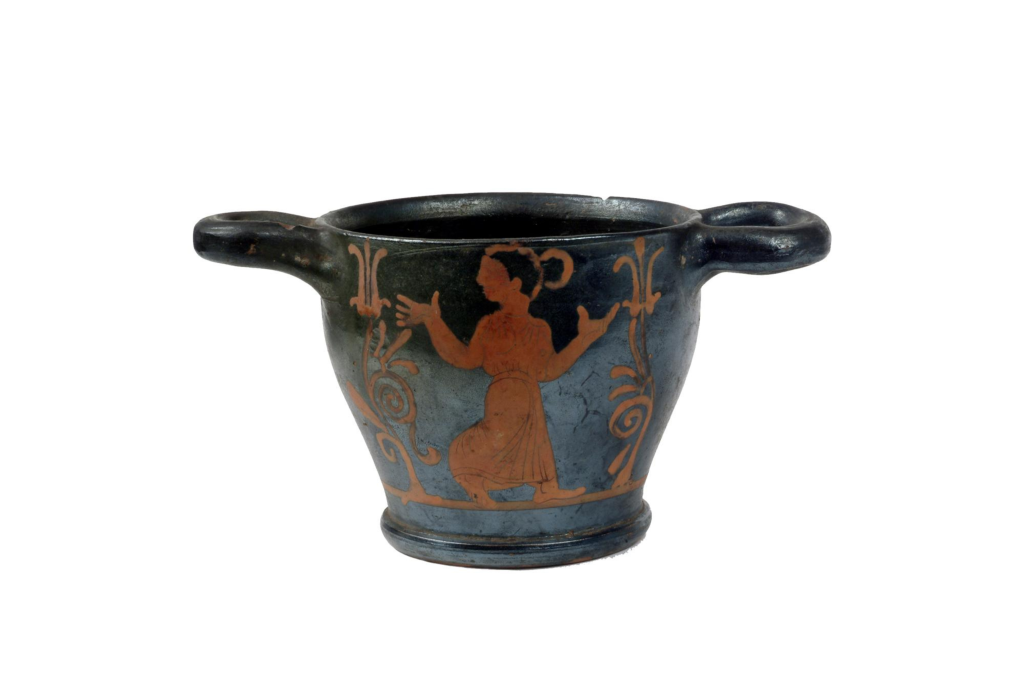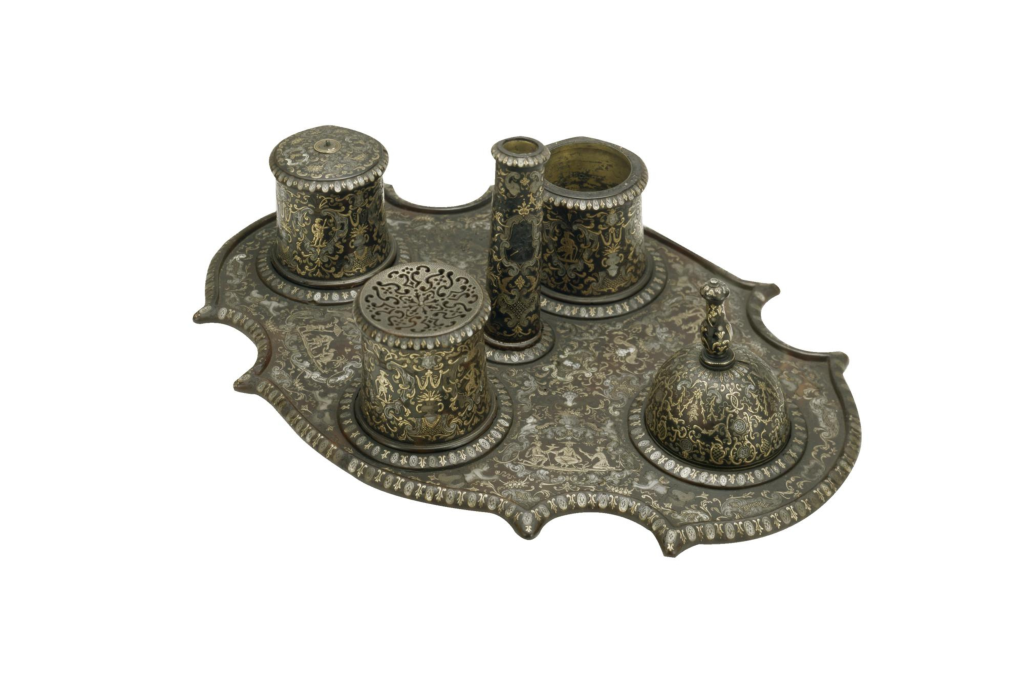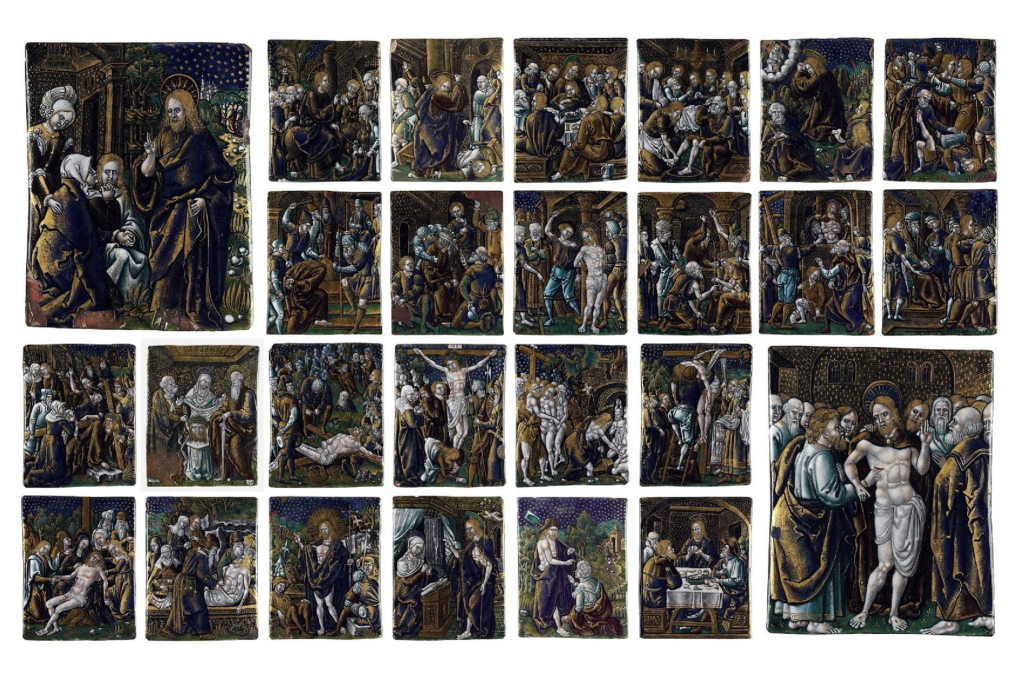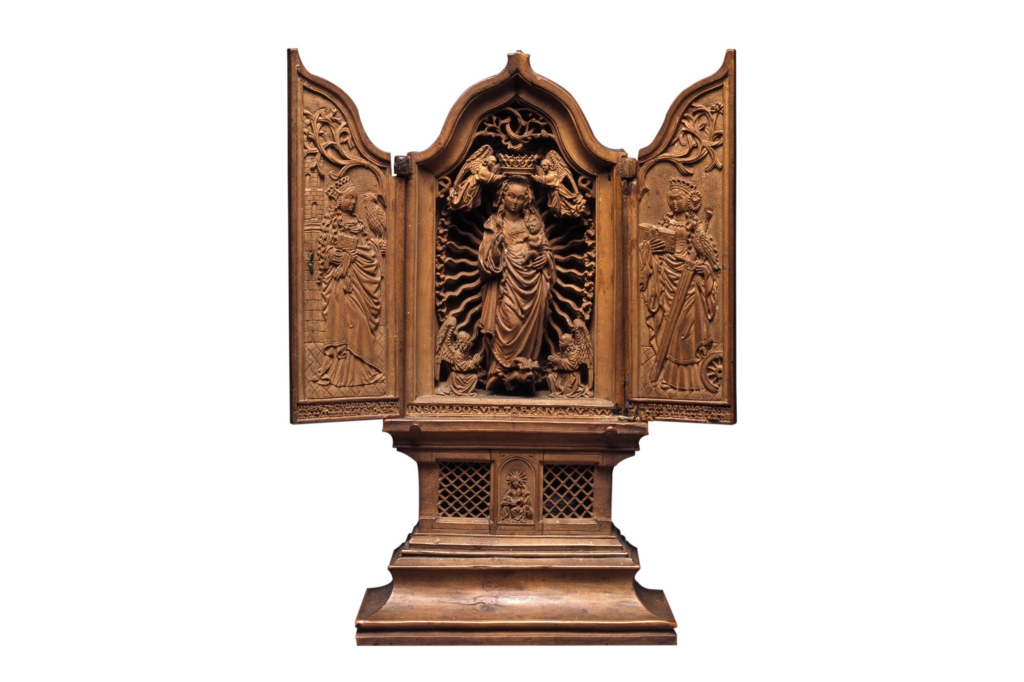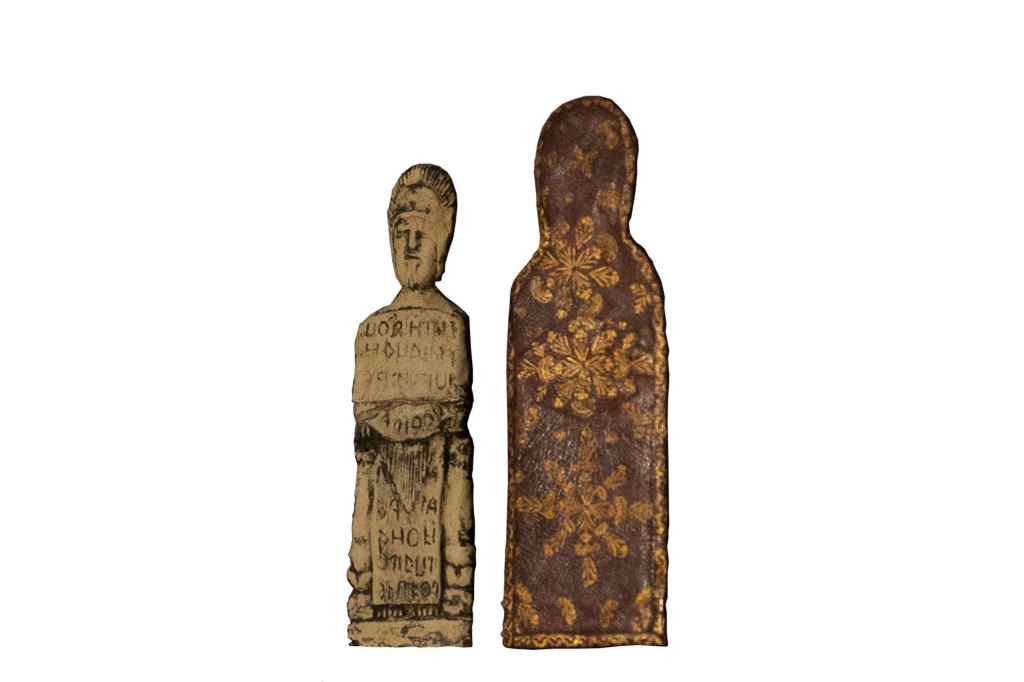
Long identified as the representation of a Celtiberian goddess, this figurine remained an enigma for more than 180 years. Its configuration and the intriguing inscription on the front, in unidentified characters (probably invented), are not consistent with the case lined with fine red leather and engraved in gold, similar to 18th century jewelry cases.
In 2003, the MNSR began what would become a long process of documenting and classifying this piece, presenting it to several archaeologists for study purposes, in comparison with 3 other similar figurines found in the National Library of Portugal (those associated with a nucleus of the Antiquities Cabinet, created in 1804, at the Royal Public Library of the Court and Kingdom). This challenge resulted in the publication, in 2020, of the study Ídolos Prerromanos invented en el Portugal illustrated from the siglo XVIII by Martin Almagro-Gorbea, in which it is clarified that the figurine is after all a false idol, inspired by engravings that represented antiquities discovered in the XVIII century. This piece is a testimony to the awakening of archeology and antiquities collecting in Portugal, perhaps in the enlightened circle of scholars and amateurs gathered in Évora, in the sphere of Dom Frei Manuel do Cenáculo.

